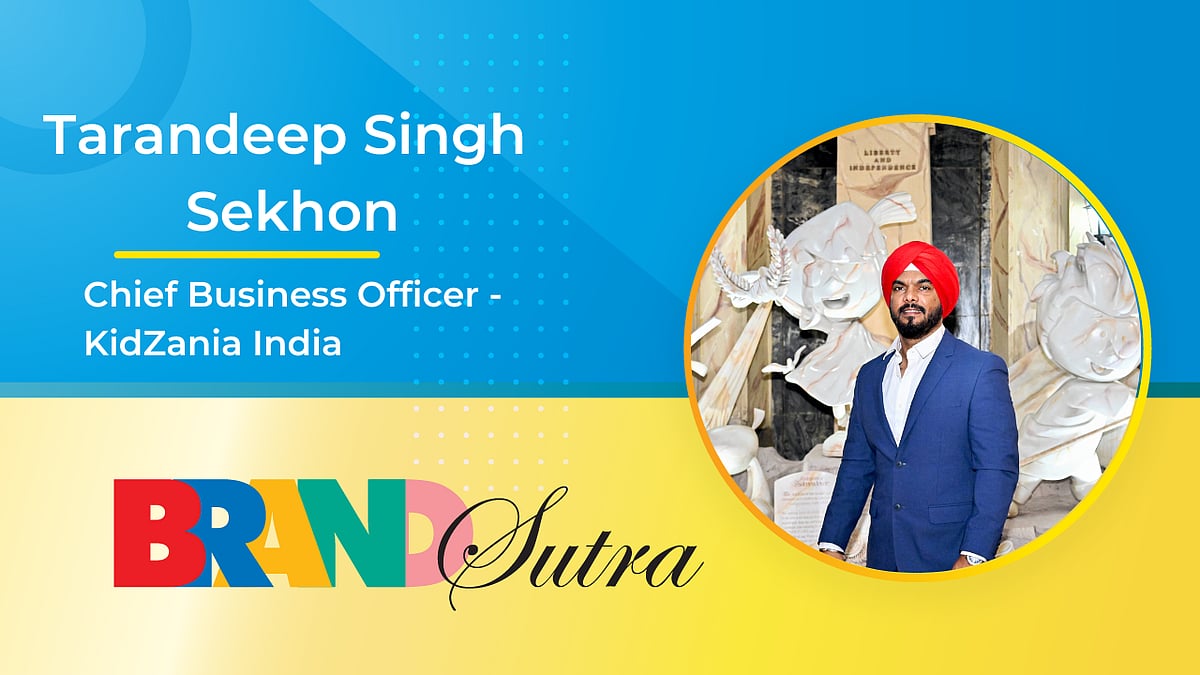Inside KidZania India: A Mini City With Big Potential For Kids & Brands
Tarandeep Singh Sekhon on KidZania—a mini city with big potential for the brands of tomorrow.

Children naturally love pretending to be adults. Since its launch in Mexico City in 1999, KidZania has reimagined learning through play—building a city run by kids, complete with its own economy and institutions. The brand made its India debut in 2013 with a massive indoor setup in Mumbai followed by Noida.
Kids are encouraged to explore aspirations, develop social skills and feel empowered. But beyond that, KidZania also involves kids in the decision-making process—be it brand communication, experience curation or feedback cycles. In conversation with BrandSutra, Tarandeep Singh Sekhon, Chief Business Officer of KidZania India, shares insights on its one-of-a-kind model—experiential learning for kids and a playground for brands.
Edited excerpts…
Tell us about the evolving significance of KidZania in the world today.
From day one, our mission at KidZania has been to empower kids through real-world experiences. We believe that children should be exposed to practical, hands-on learning that helps them build social and cognitive skills, explore different professions and most importantly, become better citizens of tomorrow. While kids are growing up in a hyper-digital environment, physical interaction and tangible learning are more important than ever. That’s why our global tagline is “Get Ready for a Better World.”
Are each of these KidZania centers identical in terms of offerings?
While the core structure of KidZania—a functioning city with its own currency called KidZos, banks, police stations, and fire departments—remains common globally, we strongly localise the experience.
For example, in Mumbai, we feature the iconic Dabbawala activity, where kids learn logistics by completing real-time deliveries. In Delhi NCR, we offer unique experiences such as an archaeology dig site and a courtroom, allowing children to role-play as archaeologists, lawyers or judges.
How are these unique initiatives communicated and marketed?
We target parents through messaging around purposeful engagement and safety, and kids through aspirational storytelling. Our strategy is fully 360°—ATL, BTL, digital and influencer marketing. We also engage and partner with schools. Every year, over a lakh children visit through school excursions. We also participate in children’s fairs and collaborate with mommy bloggers and influencers who engage with KidZania first-hand.
We also have a KidZania Council—our internal government, formed annually through a process involving applications, group discussions and interviews. We select 14 children who provide us with valuable feedback on activities and campaigns. We engage with them quarterly and invite them to special events, like the India Kids Summit, where they even address industry CXOs. We’ve also taken them on immersive trips to places like the Mumbai Metro headquarters and to the DOMS factory… places offering real-world exposure beyond KidZania.
How do you ensure the experience remains fresh and engaging for repeat visitors?
We constantly innovate and add new role-play activities and experiences. For instance, in May, we launched a Madhya Pradesh Tourism Center that uses AR/VR to simulate jungle and river safaris. Kids wear VR glasses, go on a safari and even take a quiz at the end to identify animals they’ve seen. They can even print a personalised postcard as a takeaway.
Recently, in Delhi NCR, we also unveiled a Cream Bell Ice Cream Factory, where children form the factory assembly line and learn how ice cream is made, step-by-step. Likewise, we have a Britannia Laughing Cow Cheese factory and a Parle-G biscuit factory, which has been here since day one.
There are no typical video games or arcade games in KidZania. The one with the MP Tourism experience was the first where we've used AR, VR. These immersive experiences ensure the excitement never fades.
What are some criteria in selecting ideal brand partners for children to engage with?
We call our collaborators “purpose partners”—they’re not here for hard-selling but for strategic, long-term alliances. Over 13 years in India, we’ve partnered with over 100 brands, including Parle-G, Britannia, Frooti and Cream Bell. Brands get a chance to interact meaningfully with future consumers. Take our IDFC First Bank partnership—children earn KidZos, open savings accounts, use debit cards, and even access ATMs. This mirrors real-world banking and builds brand familiarity at a young age.
What’s your vision for the future of edutainment in India, and KidZania’s role in it?
There’s a growing demand for experiential learning spaces. The edutainment sector in India is ripe for growth and KidZania is at the forefront of this shift, offering life-like environments where learning is by doing. We’re looking to expand to new cities, deepen brand partnerships and continually evolve our offerings to ensure children are inspired, educated and engaged every time they step into KidZania.
RECENT STORIES
-
-
-
-
-
